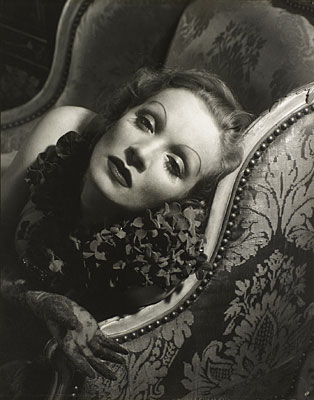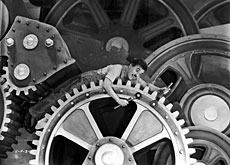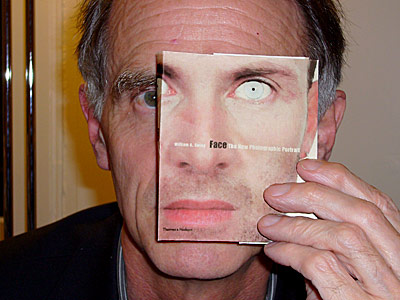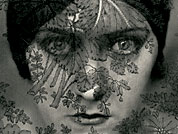Shooting stars and beyond

Two Swiss museums are hosting the most comprehensive retrospective ever on one of the icons of 20th-century photography.
American photographer Edward Steichen, who died in 1973 two days short of his 94th birthday, had a career spanning 70 years, during which he never ceased to innovate.
There certainly is a contrast between the 19-year-old who appears as a sharp silhouette in an early image and the “monument” who was responsible for a “photographic epic”, to use the title of the retrospective devoted to him by Lausanne’s Musée de l’Elysée.
Preparing the exhibition was an epic in itself. “The issue of copyright took ages to sort out,” said William Ewing, the museum’s director, at the preview. Most of the works of art belong to the world’s largest galleries and private collections.
If the exhibition reveals one thing about Steichen, it’s not his talent, but the abundance and diversity of his work.
Landscapes, portraits, still lifes, painting, fashion, journalism, war photography, architecture, graphic art, advertising and to cap it all off museum curatorship – Steichen was a jack-of-all-trades, and often ahead of his contemporaries.
His first images, in sepia, reveal the issues with which his generation of photographers asserted themselves. Photography is the equal of painting, they said, and we are proof of that.
Nathalie Herschdorfer, co-organiser of the retrospective, said: “These photographs were conceived as works of art and with the intention to be displayed. What’s more, Steichen was an excellent technician.”
Pragmatic
Steichen never hesitated to change direction – often at the risk of alienating those who adored his previous work – and in 1923 he became head of photography at the US fashion magazines Vanity Fair and Vogue. The other exhibition at Zurich’s Kunsthaus is devoted to these images.
“All the stars – actors, politicians, writers – went to see him,” Ewing said. “The magazine publishing house Condé Nast had ‘hidden’ his archives to an extent but they agreed to open it up a bit for us – and guess what: they had 2,000 photographs! That’s what gave us the idea for a second exhibition.”
The 200 prints on display in Zurich grab one’s attention by the apparent simplicity of the light – Steichen never resorted to artistic effects. He was pragmatic and would show Gary Cooper or Greta Garbo without (too) much affectation.
Broad interests
Among his interests, Steichen would buy and display works by his contemporaries.
His last – but certainly not least – career was as director of photography at New York’s Museum of Modern Art (MoMA). Over 15 years Steichen organised 46 exhibitions, several of which achieved global recognition.
Far from the glamour of the stars from the 1920s and 1930s, Steichen also contributed towards spreading images of the US Farm Security Administration, famous for its small but highly influential photography programme that portrayed the challenges of rural poverty during the Depression.
Steichen also presented works by Brassaï, Cartier-Bresson and Doisneau and would launch himself into intense thematic journeys.
Family of Man
Without recognising separate genres, one would have photojournalism rubbing shoulders with amateur photography or scientific work. The apotheosis of this is Steichen’s The Family of Man, a vast exhibition which he said represented the “culmination” of his career.
The 503 photos were selected from almost two million pictures taken by 273 photographers, famous and unknown, in 68 countries. They offer a striking snapshot of the human experience which lingers on birth, love, and joy, but also touches war, privation, illness and death.
Steichen’s intention was to prove visually the universality of human experience and photography’s role in its documentation.
The Family of Man opened in 1955 at the MoMA and is the only exhibition included in the Memory of the World International Register, an initiative run by Unesco, the United Nations cultural agency.
The exhibition later travelled in several versions around the world and has been viewed by more than nine million people. The only surviving edition was presented to Luxembourg, the country of Steichen’s birth, and is on permanent display at the Castle of Clervaux.
swissinfo, based on a French article by Ariane Gigon
The Musée de l’Elysée in Lausanne is showing “Edward Steichen: a photographic epic” until March 24.
The Kunsthaus in Zurich is showing “In high fashion”, which focuses solely on Steichen’s images from his time at Vanity Fair and Vogue, until March 30.
1879: Steichen is born in Bivange, Luxembourg. His family moves to the United States in 1881 and he becomes an American citizen in 1900.
1900: He visits Paris, where he meets the sculptor Rodin and studies fine art. Steichen is known as much for his photography as his painting.
1902: He joins the Photo-Secession movement, a group of photographers led by Alfred Stieglitz in the early 1900s that helped to raise standards and awareness of art photography. Stieglitz’s journal Camera Work is launched.
1905-1911: Steichen helps create the Little Galleries of the Photo-Secession with Stieglitz and is the first to show works by Picasso and Matisse, among others, in New York.
1917: Steichen joins the army as a war reporter.
1923-1937: Becomes head of photography at the US fashion magazines Vanity Fair and Vogue. Shoots all the stars of the day.
1942: War photographer for the navy.
1947: Appointed director of photography at New York’s Museum of Modern Art (MoMA).
2006: A copy of Steichen’s early pictorialist photograph, The Pond-Moonlight (1904), sells for $2.9 million (SFr3.18 million), the highest price ever paid for a photograph at auction. This was overtaken by Andreas Gursky’s 99 Cent II Diptychon (2001) in 2007.

In compliance with the JTI standards
More: SWI swissinfo.ch certified by the Journalism Trust Initiative




You can find an overview of ongoing debates with our journalists here. Please join us!
If you want to start a conversation about a topic raised in this article or want to report factual errors, email us at english@swissinfo.ch.